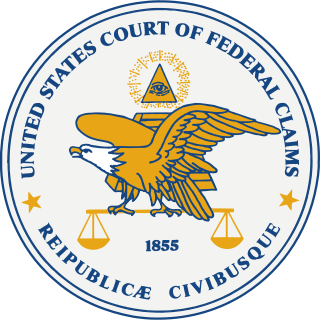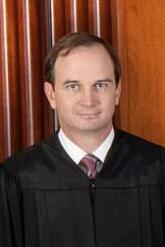In legal terminology, a complaint is any formal legal document that sets out the facts and legal reasons that the filing party or parties believes are sufficient to support a claim against the party or parties against whom the claim is brought that entitles the plaintiff(s) to a remedy. For example, the Federal Rules of Civil Procedure (FRCP) that govern civil litigation in United States courts provide that a civil action is commenced with the filing or service of a pleading called a complaint. Civil court rules in states that have incorporated the Federal Rules of Civil Procedure use the same term for the same pleading.
Negligence is a failure to exercise appropriate and/or ethical ruled care expected to be exercised amongst specified circumstances. The area of tort law known as negligence involves harm caused by failing to act as a form of carelessness possibly with extenuating circumstances. The core concept of negligence is that people should exercise reasonable care in their actions, by taking account of the potential harm that they might foreseeably cause to other people or property.

The Seventh Amendment to the United States Constitution is part of the Bill of Rights. This amendment codifies the right to a jury trial in certain civil cases and inhibits courts from overturning a jury's findings of fact.
Punitive damages, or exemplary damages, are damages assessed in order to punish the defendant for outrageous conduct and/or to reform or deter the defendant and others from engaging in conduct similar to that which formed the basis of the lawsuit. Although the purpose of punitive damages is not to compensate the plaintiff, the plaintiff will receive all or some of the punitive damages in award.
Collateral estoppel (CE), known in modern terminology as issue preclusion, is a common law estoppel doctrine that prevents a person from relitigating an issue. One summary is that, "once a court has decided an issue of fact or law necessary to its judgment, that decision ... preclude[s] relitigation of the issue in a suit on a different cause of action involving a party to the first case". The rationale behind issue preclusion is the prevention of legal harassment and the prevention of overuse or abuse of judicial resources.
In United States law, a motion is a procedural device to bring a limited, contested issue before a court for decision. It is a request to the judge to make a decision about the case. Motions may be made at any point in administrative, criminal or civil proceedings, although that right is regulated by court rules which vary from place to place. The party requesting the motion may be called the moving party, or may simply be the movant. The party opposing the motion is the nonmoving party or nonmovant.

The Erie doctrine is a fundamental legal doctrine of civil procedure in the United States which mandates that a federal court called upon to resolve a dispute not directly implicating a federal question must apply state substantive law.

The United States Court of Federal Claims is a United States federal court that hears monetary claims against the U.S. government. It was established by statute in 1982 as the United States Claims Court, and took its current name in 1992. The court is the successor to trial division of the United States Court of Claims, which was established in 1855.
Dennis Jacobs is a senior United States circuit judge of the United States Court of Appeals for the Second Circuit.
Lexmark International, Inc. v. Static Control Components, Inc., is an American legal case involving the computer printer company Lexmark, which had designed an authentication system using a microcontroller so that only authorized toner cartridges could be used. The resulting litigation has resulted in significant decisions affecting United States intellectual property and trademark law.
Guaranty Trust Co. v. York, 326 U.S. 99 (1945), was a United States Supreme Court case that described how federal courts were to follow state law. Justice Frankfurter delivered the majority opinion further refining the doctrine set forth in Erie Railroad Co. v. Tompkins.
A Markmanhearing is a pretrial hearing in a U.S. District Court during which a judge examines evidence from all parties on the appropriate meanings of relevant key words used in a patent claim, when patent infringement is alleged by a plaintiff. It is also known as a "Claim Construction Hearing".

Anderson v. Cryovac was a federal lawsuit concerning toxic contamination of groundwater in 1986 in Woburn, Massachusetts.

William Byrd Traxler Jr. is an American jurist who currently serves as a United States circuit judge of the United States Court of Appeals for the Fourth Circuit.
Gasperini v. Center for Humanities, 518 U.S. 415 (1996), was a decision by the Supreme Court of the United States in which the Court further refined the Erie doctrine regarding when and how federal courts are to apply state law in cases brought under diversity jurisdiction. The Court held that the New York state rule applied.
The Virginia Circuit Courts are the state trial courts of general jurisdiction in the Commonwealth of Virginia. The Circuit Courts have jurisdiction to hear civil and criminal cases. For civil cases, the courts have authority to try cases with an amount in controversy of more than $4,500 and have exclusive original jurisdiction over claims for more than $25,000. In criminal matters, the Circuit Courts are the trial courts for all felony charges and for misdemeanors originally charged there. The Circuit Courts also have appellate jurisdiction for any case from the Virginia General District Courts claiming more than $50, which are tried de novo in the Circuit Courts.
Lemmerman v. A.T. Williams Oil Co., 318 N.C. 577, 350 S.E.2d 83 (1986), was a case before the Supreme Court of North Carolina, which hinged on the question of whether the plaintiff met the definition as an "employee" of the A.T. Williams Oil Co. under the state's Workers' Compensation Act.
Moses H. Cone Memorial Hospital v. Mercury Construction Corp., 460 U.S. 1 (1983), commonly cited as Moses Cone or Cone Hospital, is a United States Supreme Court decision concerning civil procedure, specifically the abstention doctrine, as it applies to enforcing an arbitration clause in a diversity case. By a 6–3 margin, the justices resolved a complicated construction dispute by ruling that a North Carolina hospital had to arbitrate a claim against the Alabama-based company it had hired to build a new wing, even though it meant that it could not consolidate it with ongoing litigation it had brought in state court against the contractor and architect.
Within the United States, the use of asbestos is limited by state and federal regulations and legislation. Improper use of asbestos and injury from exposure is addressed through administrative action, litigation, and criminal prosecution. Injury claims arising from asbestos exposure may be tried as mass torts.

Julius Ness "Jay" Richardson is an American judge and lawyer who serves as a United States circuit judge of the United States Court of Appeals for the Fourth Circuit. He was formerly an Assistant United States Attorney for the District of South Carolina.






